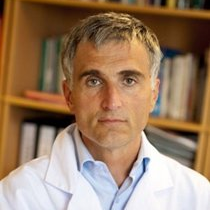Photodynamic Therapy 2021
A special issue of Pharmaceuticals (ISSN 1424-8247). This special issue belongs to the section "Pharmaceutical Technology".
Deadline for manuscript submissions: closed (31 March 2021) | Viewed by 45107
Special Issue Editor
Interests: photodynamic therapy; cancer; clinical evaluation; photosensitizer; dosimetry; fluorescencer; Dosimetry; fluorescence
Special Issues, Collections and Topics in MDPI journals
Special Issue Information
Dear Colleagues,
Photodynamic therapy (PDT) is a light-based photochemistry process. The illumination of a photoactivatable molecule (also called photosensitizer) with visible or near infrared light produces reactive oxygen toxic species to destroy tumor cells. This treatment modality leads to highly targeted actions, because reactive oxygen species are produced only where light is applied. Light is not harmful, nor is the photoactivable molecule. Only the combination of three elements (photosensitizer, oxygen, and light) is required to induce photo-oxidation reactions. PDT has proven to be a promising modality in many medical applications including cutaneous condition, infectious diseases, and various cancers at different stages.
Pharmaceuticals is an online open access journal covering drug-related sciences. It is indexed by PubMed and SCIE. It has *Impact Factor* of 4.286, entering the ranking in the category ‘Pharmacology & Pharmacy’placed 49 out of 270 (Q1). The journal Pharmaceuticals invites both reviews and original articles shedding light on the challenges and opportunities of the development of innovative solutions for photodynamic therapy. Topics include selective photoactivatable molecules targeting receptors overexpressed into tumor membranes and/or on neovessels; molecules exhibiting red shifted absorption for better penetration of light into tissues; photobactericidal agents; theranostics; and photodiagnosis. Reviews and original articles dealing with PDT-associated immunotherapy, new radiation systems such as X-rays, or new devices allowing for better illumination and/or dosimetry are also welcome.
Prof. Dr. Serge Mordon
Guest Editor
Manuscript Submission Information
Manuscripts should be submitted online at www.mdpi.com by registering and logging in to this website. Once you are registered, click here to go to the submission form. Manuscripts can be submitted until the deadline. All submissions that pass pre-check are peer-reviewed. Accepted papers will be published continuously in the journal (as soon as accepted) and will be listed together on the special issue website. Research articles, review articles as well as short communications are invited. For planned papers, a title and short abstract (about 100 words) can be sent to the Editorial Office for announcement on this website.
Submitted manuscripts should not have been published previously, nor be under consideration for publication elsewhere (except conference proceedings papers). All manuscripts are thoroughly refereed through a single-blind peer-review process. A guide for authors and other relevant information for submission of manuscripts is available on the Instructions for Authors page. Pharmaceuticals is an international peer-reviewed open access monthly journal published by MDPI.
Please visit the Instructions for Authors page before submitting a manuscript. The Article Processing Charge (APC) for publication in this open access journal is 2900 CHF (Swiss Francs). Submitted papers should be well formatted and use good English. Authors may use MDPI's English editing service prior to publication or during author revisions.
Keywords
- photodynamic therapy
- photosensitizers
- photodiagnosis
- cells
- receptors
- antimicrobial
- photodynamic therapy
- fluorescence
- X-rays
- immunomodulation
- light
- dosimetry







